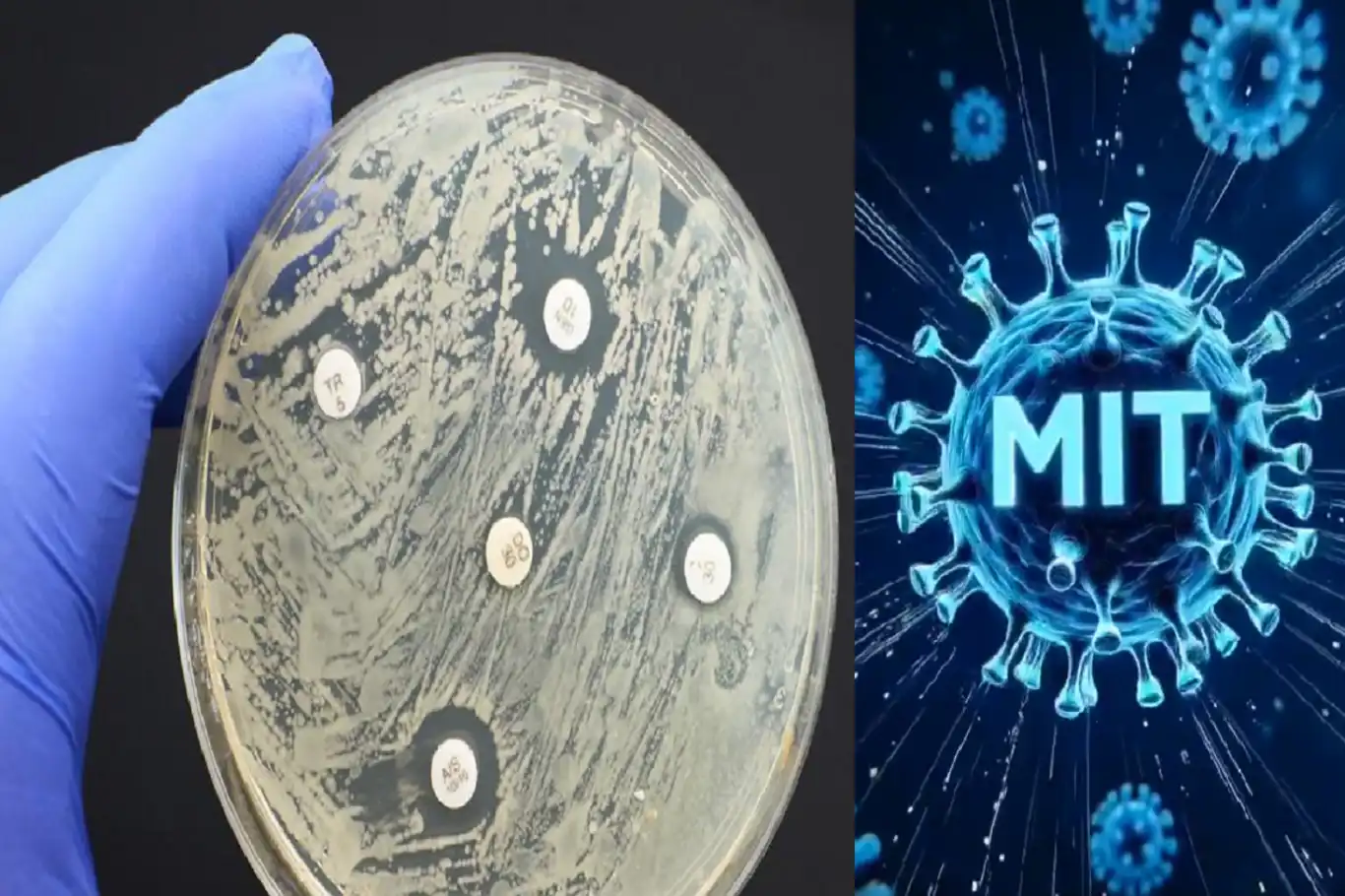MIT researchers harness AI to design novel antibiotics for drug-resistant infections


MIT researchers, with the aid of artificial intelligence, have designed novel antibiotics targeting two formidable drug-resistant bacteria: Neisseria gonorrhoeae and methicillin-resistant Staphylococcus aureus (MRSA).
The findings, published today in Cell, mark a significant step forward in addressing the global crisis of antimicrobial resistance, which claims nearly 5 million lives annually.
Using generative AI algorithms, the team, led by James Collins, the Termeer Professor of Medical Engineering and Science at MIT’s Institute for Medical Engineering and Science (IMES), computationally screened over 36 million potential compounds to identify new antibiotics with unique structures and mechanisms. These compounds, unlike any existing antibiotics, appear to kill bacteria by disrupting their cell membranes—a novel approach that could bypass current resistance mechanisms.
The rise of antibiotic-resistant bacteria has outpaced the development of new drugs, with only a handful of new antibiotics approved by the FDA over the past 45 years, most being variants of existing drugs. To tackle this challenge, Collins’ team at MIT’s Antibiotics-AI Project turned to AI to explore uncharted chemical spaces, generating and evaluating theoretical compounds that had never been synthesized.
“We’re excited about the new possibilities this project opens up for antibiotics development,” Collins said. “Our work shows the power of AI from a drug design standpoint, enabling us to exploit much larger chemical spaces that were previously inaccessible.
”The researchers employed two strategies: a fragment-based approach, where AI designed molecules around a chemical fragment with known antimicrobial activity, and an unconstrained approach, where AI freely generated new molecules without predefined starting points.
For the fragment-based approach, the team focused on N. gonorrhoeae, the bacterium responsible for gonorrhea, a sexually transmitted infection increasingly resistant to existing treatments. Starting with a library of 45 million chemical fragments, the researchers used machine-learning models to identify about 1 million promising candidates. After filtering out compounds that were toxic, chemically unstable, or too similar to existing antibiotics, they used two AI algorithms—chemically reasonable mutations (CReM) and fragment-based variational autoencoder (F-VAE)—to generate 7 million new molecules incorporating a promising fragment called F1.
From these, they identified a compound named NG1, which proved highly effective against N. gonorrhoeae in both lab tests and a mouse model of drug-resistant gonorrhea. NG1 targets LptA, a protein critical to bacterial outer membrane synthesis, offering a novel mechanism that could evade existing resistance pathways.
In a parallel effort targeting S. aureus, the team used AI to generate 29 million unconstrained molecules, narrowing them down to 90 candidates. Of the 22 synthesized and tested, six showed strong activity against multi-drug-resistant S. aureus, with the top candidate, DN1, successfully clearing an MRSA skin infection in mice. Unlike NG1, DN1 appears to disrupt bacterial cell membranes more broadly, without relying on a single protein target.
The discoveries are a significant milestone, but the compounds require further refinement before clinical use. Phare Bio, a nonprofit partner in the Antibiotics-AI Project, is now working to optimize NG1 and DN1 for preclinical testing and exploring their potential against other deadly pathogens, including Mycobacterium tuberculosis and Pseudomonas aeruginosa.
“This is a game-changer for antibiotic discovery,” said Aarti Krishnan, a lead author and MIT postdoc. “By venturing into underexplored chemical spaces, we’re uncovering new ways to combat bacteria that have outsmarted our current drugs.”
The World Health Organization estimates that antimicrobial resistance could cause 10 million deaths annually by 2050 if new solutions are not found. The MIT team’s AI-driven approach offers hope by accelerating the discovery of novel antibiotics. Recent reports from the New England Journal of Medicine (August 10, 2025) highlight the urgent need for such innovations, noting that N. gonorrhoeae and MRSA infections are becoming harder to treat, particularly in vulnerable populations.
Funded by the U.S. Defense Threat Reduction Agency, the National Institutes of Health, and others, this research underscores the transformative potential of AI in drug development. As Collins noted, “This platform could be a blueprint for tackling other bacterial pathogens, bringing us closer to overcoming the resistance crisis.” (ILKHA)
LEGAL WARNING: All rights of the published news, photos and videos are reserved by İlke Haber Ajansı Basın Yayın San. Trade A.Ş. Under no circumstances can all or part of the news, photos and videos be used without a written contract or subscription.
The World Humanoid Robot Games, a groundbreaking international sports competition for humanoid robots, kicked off in Beijing on Thursday, marking a significant milestone in the global advancement of robotics technology.
A worker at Paris Charles de Gaulle Airport has been suspended after publicly expressing solidarity with the Palestinian people by shouting “Free Palestine” over a radio exchange with the crew of Israel’s El Al airline, French authorities confirmed on Tuesday.
xAI owner Elon Musk said that for now, free artificial intelligence video creation will be available to US users.